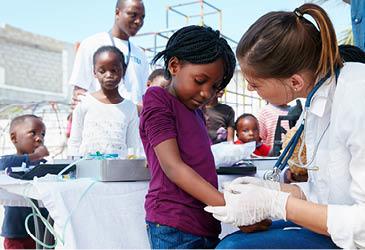Community health intervention can be a highlight of medical school for many students. But what differentiates successful programs from unsuccessful ones? Students with experience in both recently shared their thoughts, with advice distilled down to a simple concept: Listen to your community as you would an individual patient.
The students were from Morehouse School of Medicine, in Atlanta, which offers a first-year Community Health course. They were speaking to medical and health professions students at the student-led Health Equity and Community-based Learning meeting, hosted by the University of California, Davis, School of Medicine, which is part of the AMA’s Accelerating Change in Medical Education Consortium.
One of the presenters, Stephany Rush, began by underscoring the need for the course—that good intentions alone won’t produce successful interventions.
Rush had previously taken part in a private community service project that involved building community gardens in Atlanta. She and others on the project thought gardens were an obvious answer to some of the community’s most visible problems—poor diet and lack of access to healthy foods.
“At the end of it, one lady, she came up to me and [asked], ‘What is this?’” Rush recalled.
“This is a zucchini,” she replied.
“I’ve never eaten this before,” the woman said. “I don’t even know how to cook this. What do I do with this?”
Rush and her partners on the project realized then that they hadn’t truly listened to the community during their assessment and that the gardens were, in fact, not the right intervention.
Identifying the community’s chief complaint
So what, then, typifies the right intervention? The other presenter, Collin Shumate, explained that students have to resist the urge to decide paternalistically what a community should want.
“You’re treating the whole community as your patient,” he said. “So if you do a history and physical exam on a real person, you take stock of what ails them. In the same way, we’re looking for strengths and weaknesses of the community and what they need. What’s their chief complaint?”
The Community Health course is taught by many of the same experts who teach in Morehouse’s Master’s in Public Health program. While medical students spend a year partnered with communities, their professors partner with sites, which are often day-care centers, homeless shelters and senior-living facilities, over several years to ensure continuity and facilitate longer-term interventions.
Each intervention starts with a “windshield survey.” This is a walk or drive around the community to note a variety of social, environmental and economic factors, including ease of access to public transportation and the retail mix—whether there are more liquor stores than healthy grocery stores, for example—the state of housing, sidewalks and roads and the types of people one sees on the street, including children and the elderly.
The survey helps drive interviews with key community members, people who grew up in the area or have lived in it for many years. If the community site is an elementary school, for example, students will interview not just teachers and principals but also parents, janitors and anybody who spends significant time there. The goal is to reveal what’s going on in the community beneath the surface and what its residents feel are their greatest needs.
The results of the interviews are then taken to focus groups, where students have their findings evaluated and either confirmed or denied by members of the community.
“At the end of these assessments, we have a composite of what the community has told us are the needs,” Rush said. “It’s interesting because, from the windshield surveys, we kind of have an idea of what we think, and it’s always totally different by the time we finish the focus groups what the communities tell us that they need.”
When the intervention meets the community’s needs
To illustrate this point, Rush and Shumate broke the students into groups to discuss three case studies of community sites drawn from the Morehouse course: an early learning center, a senior living center and a homeless shelter.
The groups worked through the various stages of needs assessments and were able to see, in each case, how different a community’s needs might appear from the perspectives of the windshield survey, the key interviews and the focus groups.
Shumate noted, for example, that he initially saw his community as a food desert, but community members didn’t report that as their chief complaint. They were more concerned with mental health issues and the availability of helpful resources and social support.
So instead of implementing an intervention consisting of community gardens or healthy food trucks, the community instead opted for a combination of parent social activities, a community resource guide with family, financial and health resources, stress management modalities and frequent blood pressure checks.
The goal of all the interventions was two-fold—to improve health outcomes in the community and to concretize for students some of the concepts at the heart of the movement to change how medicine is taught and practiced in America.
“Some people focus on the word disparities,” Shumate said, paraphrasing one of his professors. “But we want to focus on equity.”
For more on the student-led meeting
- Working upstream to achieve the quadruple aim
- Death by ZIP code: When address matters more than genetics
- Students deliver care in homes, communities




